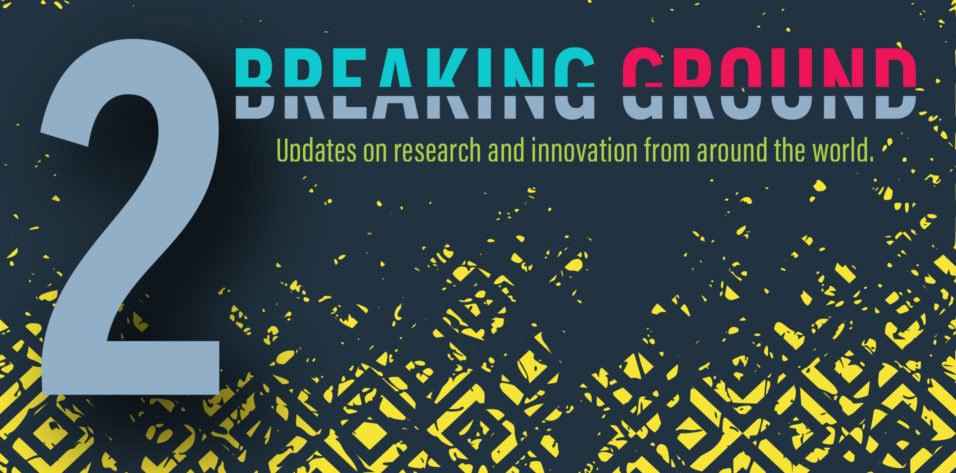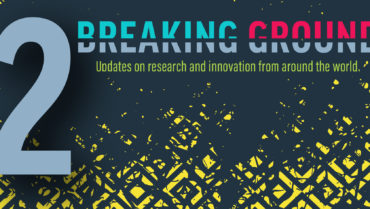It is 2004 in Galicia, Spain. An ophthalmologist—an anterior segment surgeon, to be exact—is observing corneas after treatment with LASIK. Using a Goldmann tonometer, he notices that fluorescein remains between the cornea and the tonometer. Thinking that this could be related to an underestimation of postoperative IOP (as there was no full contact between the cornea and the tonometer), he infers that the problem might be due to the measuring instrument, rather than to the surgically treated cornea. For some time, he tries adjusting the tonometer’s tension spring to modify the contact surface and give it a concave shape, to no satisfactory result.
Five years later, in 2009, a fifth-year medical student is working with this same ophthalmologist when a significant discovery is made. During a routine consultation, as the medical student removes the tonometer from the sterilizing solution, she observes that, because of surface tension, a drop has remained on the prism surface, generating a convex curve.
AN OPPORTUNITY FOR INNOVATION
As often happens in science, this chance event led to an important discovery and, later, to the creation of a new device. While discussing possible hypotheses, it occurred to these individuals that an external convex force on the cornea would increase applanation pressure and compensate for postoperative corneal thickness loss, thus preventing the underestimation of IOP in these patients.
Many years later, thanks to our research, we can state that, as contact between a tonometer and the corneal anterior surface after LASIK is incomplete, the Imbert-Fick law is not applicable. This is why Goldmann tonometry is not reliable after LASIK surgery. As you may have guessed, that brilliant ophthalmologist from Galicia was my father, Enrique Iglesias, MD, and I was the medical student working with him in 2009.
As a result of our initial discovery and subsequent research efforts, I have been working on a project to create a tonometry device that does not underestimate IOP in patients who have undergone refractive surgery. This device has potential market value because it provides a low-cost solution that is not available at the moment. Sounds easy, right? To be honest, it is a true economic and personal feat for someone who is not backed by industry or by a laboratory to venture into the manufacturing of an invention, demonstrate that it works, patent it, and place it on the market. It takes a madman—or, in this case, a madwoman—to be up to the task!
PERSISTENCE IS KEY
It is only partly true to say that this invention came to be because of the observation of ocular structures and tonometers. In fact, it became real because I took a long and complicated path to document the physical and biomechanical principles, manufacture several prisms with different radii of curvature, and design a study to evaluate the efficacy of our approach. It is the result of tough research work; countless calls to patients; hundreds of emails; and multiple meetings with experts, industry partners, lawyers, universities, commercial representatives, physicists, opticians, engineers, patent agents, and laboratories over the course of an 8-year journey.
Initially, most doors were closed to me for various reasons but primarily due to people’s uncertainty or fear of the unknown. However, over time, I have realized that is precisely where the spark is, and the fact that anyone can contribute something new to science or health care is motivating for me. A pessimistic attitude or a busy daily routine may cause us to leave behind ideas that, in other contexts, would prosper. But I believed in our idea, and when you believe in something, you’ve got to follow its lead and go where it takes you.
Thanks to this experience, I can also say that, in order to create something, it is sometimes necessary to break free from worrying about statistical significance. It was my father who helped me gain this perspective, as well as several glaucoma specialists who thought my project was relevant. Interestingly, however, it was a prestigious posterior segment surgeon from Centro de Oftalmología Barraquer in Barcelona, Jeroni Nadal, MD, an entrepreneur and author of several patents, who considered our idea and encouraged me to formalize it. I decided to make the tonometer my PhD project so that I could attain a research scholarship. I expected that it would be someone in anterior segment surgery who would have the greatest interest, but that wasn’t the case—hence the importance of telling your story to all who will listen and knocking on every single door.
IDENTIFYING THE RIGHT IDEA TO PURSUE
Dear readers, I am neither a genius nor a visionary. On the contrary, I feel lucky to be surrounded by great ophthalmologists who inspire me, such as the individuals mentioned above and the reputable anterior segment surgeon from Clínica QVision in Almería, Joaquín Fernández, MD. Many years ago, when speaking with me about my project, Dr. Fernández was the first to insist on the significance of corneal biomechanics, and he was so right!
Having never attended business school, I had no understanding of patents. So, how has my invention been able to succeed? I have improved on an existing proposal, which means that I’m not going against the market. I am working on a new line of research that runs parallel to numerous predecessors, and I am proud to contribute to the advancement of science in this way. It is important to recognize that a contribution need not be something entirely new—there is always a chance to improve a product or process that already exists.
Anyone can have a revolutionary idea, but not everyone is prepared to invest their free time and money on an uncertain project. I never would have been able to embark on this adventure without my parents’ unfailing support. Further, it is not enough to perform a vast investigation. Without a good legal strategy, an innovator is more likely to quit a project, even with substantial support. It is essential to have a reliable previous patentability examination or utility model, be aware of the current updates, and get the best advice to optimize results.
Of the countries in Latin America, Brazil has the highest number of patent applications. In Europe, however, Spain ranks far from the top of the list compared with the rest of the European nations. We’re a bit rusty in regard to pursuing any kind of innovation. In science and medicine in particular, it is still widely believed that creativity is bad because, if it’s not measurable, it’s not scientifically significant. This is shown by the country’s low investment in research and development—although now, due to the coronavirus, politicians seem to be taking an interest in research, but that is obviously a separate discussion for another time.
CONCLUSION
There are many brilliant minds in Spain, but a small number of individuals actively participate in development and innovation, which may be partly due to limited financing. Two years ago, I met Luis León, MD, from Clínica MOAT in Valencia, over social media. He was in the process of obtaining his own patent in ophthalmology. As an excited entrepreneur, every time I see someone with a patent or product, I think, “Hey, I’m not the only brave one!” I contacted Dr. León and found that we both enjoy sharing our stories to encourage others to pursue their goals. You never know who will make a breakthrough, so it is crucial to spread an encouraging message and, above all, to create a network that enriches our system of progress in innovation.
Entrepreneurship is sometimes perceived as an anti-system act of provocation, when, in fact, it is a pro-system act. Based on my experience, innovation is a necessary and positive part of our profession, as is a project like Oftalmo University, which has allowed me to share my story and connect with thousands of scientific entrepreneurs daily. Who knows how many ventures could be coming our way? Those who are willing to think outside the box and challenge the status quo are the future.



